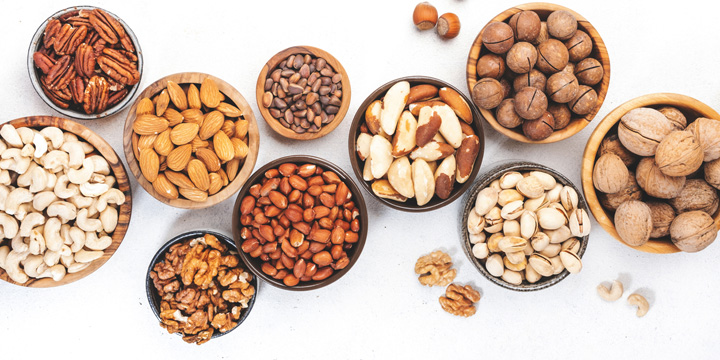
The current thinking on low-fat foods for people with diabetes has evolved significantly from past decades. In the past, mainly from the 1980’s until the early 2000’s, it was a time of ‘low fat everything’. And the food industry helped in this endeavour by producing a number of foods that were and still are labelled “low fat.” Low fat was thought to mean ‘healthy’, and the thinking was that it would be better for blood glucose control, heart health and weight management. In addition, carbohydrates, even refined ones like white bread and cereals, were often encouraged as a healthy replacement for fat. When fat is removed from foods, it’s generally replaced with something else. And that ‘something else’ is the catch.
The current thinking is that it is the type of fat, rather than the amount of fat, that matters.
Types of fats
Unfortunately, most people oversimplify fats, categorizing saturated fats as “bad” and unsaturated fats as “good.” It’s advisable to limit or avoid certain high fat foods, such as fried foods, because we know they’re harmful to health. But most high fat whole foods are not harmful. While this may be surprising to hear, eating foods that contain saturated fat will not necessarily lead to negative health outcomes, even for those with diabetes. That being said, too much saturated fat has been shown to raise LDL (the ‘bad cholesterol’) and increase the risk of heart disease and stroke. Diabetes Canada recommends limiting saturated fat intake and focusing on unsaturated fats found in foods such as canola oil, olive oil, nuts, seeds, and fatty fish.
In an effort to make cheese products that are lower in saturated fats, manufacturers often replace them with “hydrogenated” fats, which add texture to the food product. Unfortunately, hydrogenated fats increase levels of undesirable trans-fats in our bodies, which are both bad for the heart and for cholesterol levels.
Eating a balanced meal or snack that includes some fat can lead to more stable glucose levels. Fat, along with protein and fibre, slows digestion which also slows down the absorption of carbohydrates and smooths out the glucose spikes they can cause.
Low fat often = high sugar or refined carbs
Oftentimes, when fat is removed from foods such as yogurt or ice cream, it is replaced with sugar to provide texture and much-needed flavour. In some cases, the amount of sugar added is far greater than would be found in a regular, non-low-fat product, so while you may be cutting out fat, you’re not reducing your caloric intake to any great degree. For example, some brands of no-fat yogurt contain up to 19 grams of sugar per serving.
Consuming high quantities of sugar can lead to blood sugar fluctuations, and can also make it more difficult to control overall calorie intake.
Modified starch
Modified starch is made from corn, tapioca or wheat, and is used in low-fat and fat-free salad dressing, yogurt, sauces and gravies. These modified starches have no nutritional value, and are generally very difficult for the body to digest
Watch your serving size
If you eat three servings of low-fat ice cream, at 3 grams of fat and 250 calories per serving, you’re eating 9 grams of fat and 750 calories! Sometimes it’s better to eat one serving of more satisfying whole-fat food and avoid the extra calories and sugar in the low-fat version.
Before eating a fat-free food, make sure the product isn’t loaded with sugar or additives, and that it’s actually lower in calories than the regular version. Also check the serving size.
While the focus for a diabetes diet used to be low fat and counting calories, the current recommendations are to:
- include healthy fats
- focus on whole grains, legumes, vegetables, and low-glycemic carbs
- avoid low-fat processed foods since they often can spike blood sugar
- think of a ‘whole food approach’ – choose minimally processed, nutrient-dense options
Nutrition guidance for people with diabetes has shifted away from a one-size-fits-all, low-fat approach toward highly personalized strategies. Individualized meal planning now focuses on food quality, personal glucose responses, and sustainable eating patterns to better support metabolic health.



